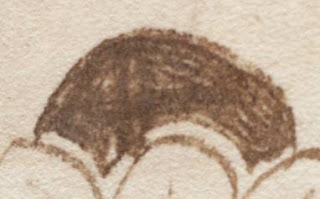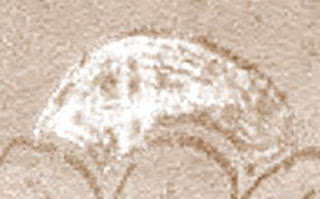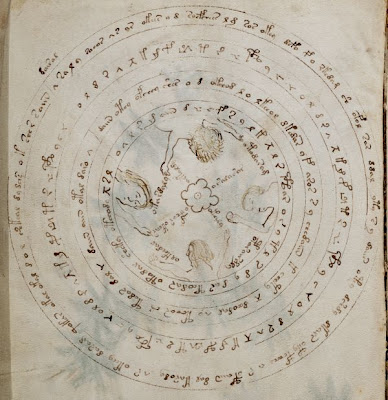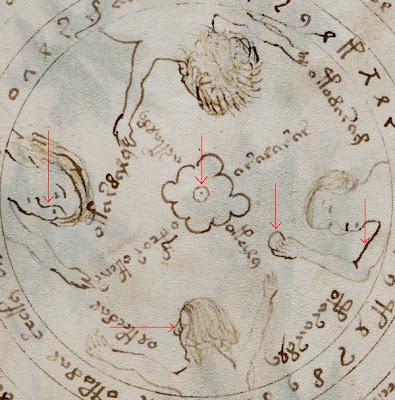Flicking through a fairly recent copy of the New Yorker in the dentist’s waiting room just now, I read a review of Jean Hollander’s translation of (and Robert Hollander’s extensive notes on) Dante’s Paradiso, the third part of the Divine Comedy. To be honest, I never had much patience with the Paradiso, all the fun in Dante was in the Inferno, a point of view this Slate article basically seems to agree with: so I never got to read about the pilgrim’s meeting with God right at the end…
Which is a shame, because there’s something interesting there which deserves a closer look. While it’s not strictly speaking cryptographic, it is linked in with the whole sacred geometry thing which people insist on projecting onto late medieval / early modern paintings and architecture, and which is essentially a form of hidden messaging (“Neoplatonic steganography“, if you will).
In the final canticle (Canticle 33) of Paradiso, Dante struggles to find words to describe the experience of meeting God: and in the end settles on an intense light (but one which the eye is attracted to rather than repelled away from), inside of which can be seen “three orbs of triple hue” (though I think the Hollanders translate these as “circles”). Dante finishes by comparing his attempts at describing the experience as no less futile than attempts to square the circle: where Man (extending the geometric metaphor just that little bit further than other poets would) is the square and God is the circle.
Anyone with even a passing familiarity with Leonardo should be aware of his representation of “squaring the circle” in his ‘Vitruvian man’. But there are a number of other early modern artworks which supposedly use a square to represent Man or Earth and a circle to represent God or Heaven. Jerusalem was supposedly round because it was a representation of Heaven, which (as any fule kno) was perfectly circular (Ptolemaic epicycles notwithstanding): which forms a (forgive me) circular argument within whose causal chains it is hard to disentangle the Platonic from the Ideal from the proto-religious.
Having said all that, Charles Hope’s argument as to the non-existence of most claimed examples of Neoplatonist allegories in Renaissance art would seem to cut a big Wile E. Coyote hole beneath most supposed examples of Renaissance sacred geometry. Even a big modern book in this general vein such as Richard Stemp’s “The Secret Language of the Renaissance” contains hardly any persuasive examples of sacred geometry: Stemp’s discussion of Massaccio’s Trinity (pp.210-213) seems a little forced in the way he ‘finds’ a circle in the background to enclose the square he has constructed around Christ.
But there is at least one artwork of the period with an inherently geometrical construction, and where Man is represented as a square and God as a great big dove at the centre of a circle, with Christ in the overlap between the two (though I can’t for the life of me think of the name of it). I had thought of this as a possible counterexample to Charles Hope’s skepticism about Neoplatonism, in that it does seem to bear the hallmarks of what is generally known as sacred geometry. However, a careful visual reading of it (when I can remember what it is!) may instead simply show it to be no more than an allegory literally derived from the last canticle of Dante’s Paradiso: in which case it may well be that we can basically consign Renaissance sacred geometry to the historical scrapheap.
Something to think about, anyway. 🙂



 Voynich Manuscript, page f57v (the ‘magic circle’ page)
Voynich Manuscript, page f57v (the ‘magic circle’ page)